
Cherry Blossom Season in Japan
March 31, 2018
February 1, 2018
This post contains a lot of shocking and sad facts, and deeply disturbing images. It is definitely not suitable for children.
I’ve been debating with myself whether to write this post about what the Khmer Rouge did to the people of Cambodia while they were in power. It’s very, very sad and quite literally the stuff of nightmares. But in the end, does it really bring something if we shut our eyes and ears and try to protect ourselves from everything that’s bad in this world? Or is there power and healing in opening our eyes and ears as wide as we can, and learn from all the past bad and try to turn it into future good, even if that costs us pain in the short term?
Finding out about the horrors that happened here is a harrowing experience in itself, let alone actually living through those horrors. It’s amazing to me that people who survived those times can still function as decent human beings. At the same time, it’s the only thing that gives me hope: the Cambodian people have found a way to move on and to live together in peace. Even people who have survived months-long torture have found a way to go on with their lives afterwards and to create something good out of their immense suffering.
It’s also amazing to me how little is known in Europe (probably America too) about what happened here. Although the casualty numbers were around the same as in the Holocaust, we in Europe hardly know anything about what happened here and (almost) never talk about it. At least I didn’t know much about it, except having vaguely heard about Pol Pot and the Cambodian genocide. It’s hardly taught in our schools and hardly ever mentioned as one of the greatest tragedies that humanity has ever seen. And it happened towards the end of the 1970s, just a few years before I was born!
So I’m doing my best through this post to pass on some of the information I have learned here, even though it’s difficult to write it and I’m sure it’s difficult to read it. Daniel and I visited a prison in Phnom Penh and the Killing Fields outside the city, where the mass murders occurred. The information I convey here was gained through these visits and the audio guides for both of them.
The Khmer Rouge came to power in Cambodia on April 17th, 1975, when they overthrew the previous military dictatorship and took control of Phnom Penh. They were communists, led by Pol Pot and a few other key figures, most of them educated at French universities. Pol Pot was strongly influenced by Mao Zedong’s ideas of the ideal state. Within 3 hours of gaining control of Phnom Penh, the Khmer Rouge started evacuating all major cities in Cambodia: all the people living in cities were forced to leave their homes and move to the countryside. Khmer Rouge soldiers with weapons oversaw the march out of the cities. Within 3 days, Phnom Penh was a ghost town.
Families were split up: men were put into units with men, women with women, kids and teens were put together into so-called mobile units, most often in completely different parts of the country. People had absolutely no property anymore and were forced to live together in camps, laboring for 12-16 hours per day, getting almost no food. Communication through letters, phone or telegraph for personal use was illegal. People knew nothing about what happened to their spouses, parents, kids during those days and if they were still alive or not. Only very small kids were sometimes allowed to stay with their mothers.
The Khmer Rouge declared all intellectual professions (such as teachers, doctors, artists, etc.) to be illegal. Most people having these professions were declared enemies of the state and killed. Wearing glasses was considered an indication of being an intellectual and could get you arrested and killed (despite the fact that some of the leaders of the Khmer Rouge wore glasses themselves).
Everyone had to wear the same clothes: a long-sleeved black jacket and long blank pants, with black sandals. Not even these clothes belonged to the people, but to the state. Actually, nothing at all belonged to the people: whatever they produced through their labor belonged to the state, they were allowed to sleep in sheds belonging to the state. They were given very little food and picking a mango or a banana from a tree was illegal, because that also belonged to the state. In an immensely deceiving act, the country was called Democratic Kampuchea (“Kampuchea” being the old name of Cambodia).
The total number of casualties in the 3 years and 8 months of the Khmer Rouge regime is estimated between 1 and 3 million. The generally agreed-upon figure is 2 million – about a quarter of the population of Cambodia. This includes the people directly killed by the Khmer Rough, plus a lot of “indirect” casualties: very many people died in those years because of exhaustion (due to over-working), starvation and illness (there were no doctors and hospitals left).
The Khmer Rouge and especially Pol Pot were deeply paranoid and started the systematic elimination of everyone who could be an enemy inside the country. One of their slogans was that it’s better to eliminate someone innocent, than to not eliminate a guilty person. If someone was suspected of being an enemy, he or she would be arrested, tortured until they signed a made-up confession, and then killed, together with their spouse and kids, so that no one would be left behind who might try to take revenge.
The Tuol Sleng prison in Phnom Penh, also known as S21, was the most infamous prison where people were locked up and tortured. It was formerly a school, which the Khmer Rouge repurposed. During the Khmer Rouge regime, an estimated 12’000-17’000 people were imprisoned and tortured here, and the vast majority of them were then killed – there are only 12 known survivors.
People were brought here, a photo was taken of each person (the Khmer Rouge were very thorough about keeping exact records), then that person was stripped to their underwear, their hands tied behind their backs and they were blindfolded and thrown in a cell. (Kids were directly taken from their mothers and killed.) Then, sooner or later the torture started, until they signed whatever accusations were brought against them. If they tried to say they were innocent, they would be punished for it, because “Angkar makes no mistakes. The fact that you were arrested is already proof of your guilt.” Angkar was the leading organization of the Khmer Rouge.
Some of those photos, together with some photos after torture, are now displayed in the museum. You walk between hundreds of such photos, with these ghosts from the past staring at you, and you know they were all tortured and killed. We didn’t take any photos of those photos, but they look like this.
After days, weeks or months of torture, virtually all ended up signing whatever admission of guilt the Khmer Rouge wanted them to sign. Some “confessed” to having collaborated with the CIA, although they had no idea what that was. Sometimes they were tortured 3 times per day, through electric shocks, beating with bamboo sticks, drowning simulation, hanging by the hands tied in the back, nail pulling, etc. For women there were even more refined ways of torture, but I will spare you that. Plus, women sometimes got raped by the guards, although that of course was not officially allowed. Prisoners were given almost no food: twice a day they got 2-3 spoons of liquid with 2-3 grains of rice in it. But it was important that they remain alive until they sign the confession: if they died of starvation, sickness or during torture, that would have very bad consequences for their guards, who might become prisoners themselves.
Prisoners were not allowed to talk between themselves or to make any noise, otherwise they would be beaten. They were also not allowed to cry out during torture, but of course they did . Some of them tried to kill themselves and some even managed to: one jumped from the top level of the prison, one poured oil out of a burning lamp on himself, another one stuck a pen (which he was supposed to use to sign his confession) in his neck. After these events, the guards tried to make sure that it wouldn’t happen again, for example by adding barbed wire around the building so that prisoners couldn’t jump to their deaths.
Here are some photos we took at the S21 prison. In most parts of it, it was not allowed to take photos.
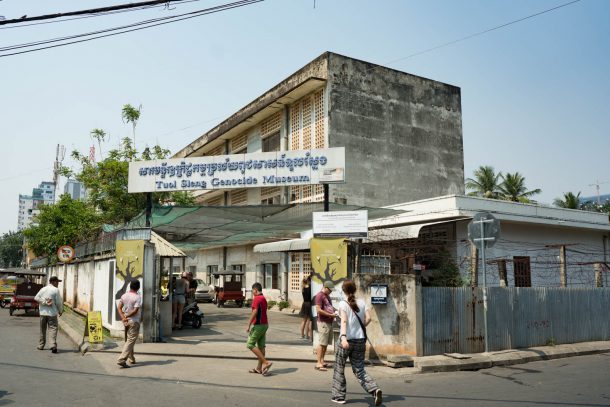
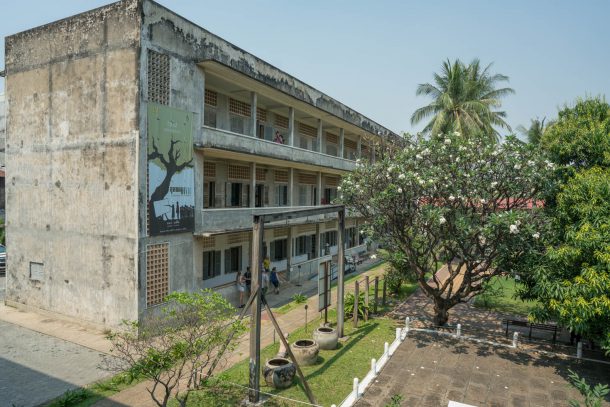
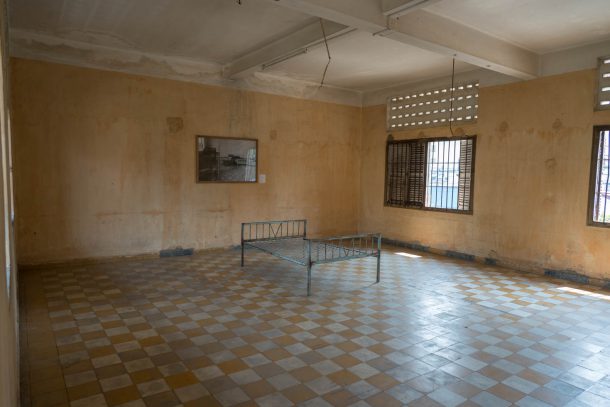
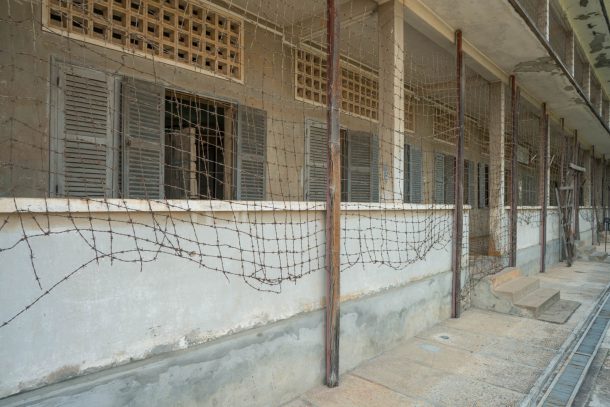
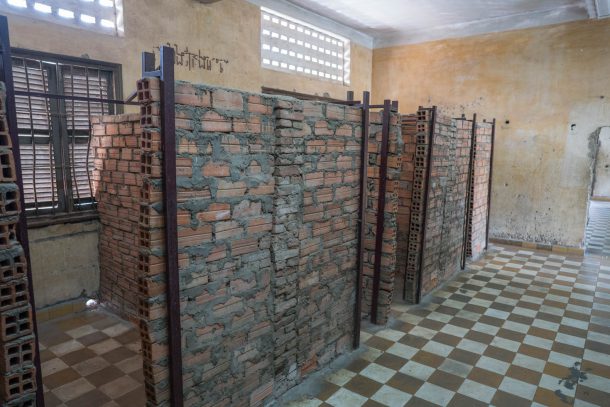
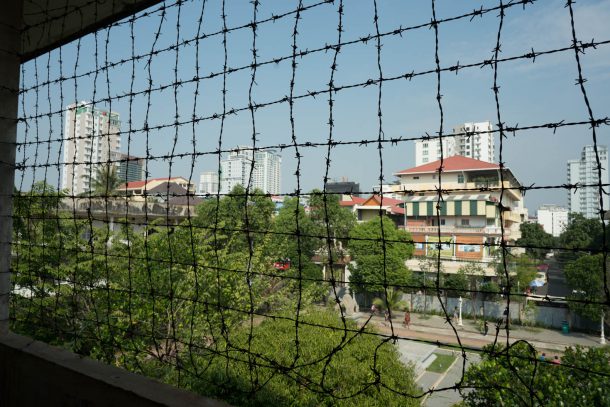
Here are some photos we took close to Battambang, which show the different torture methods used.
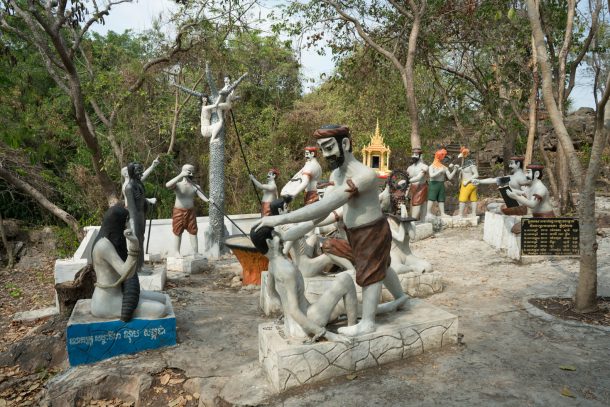

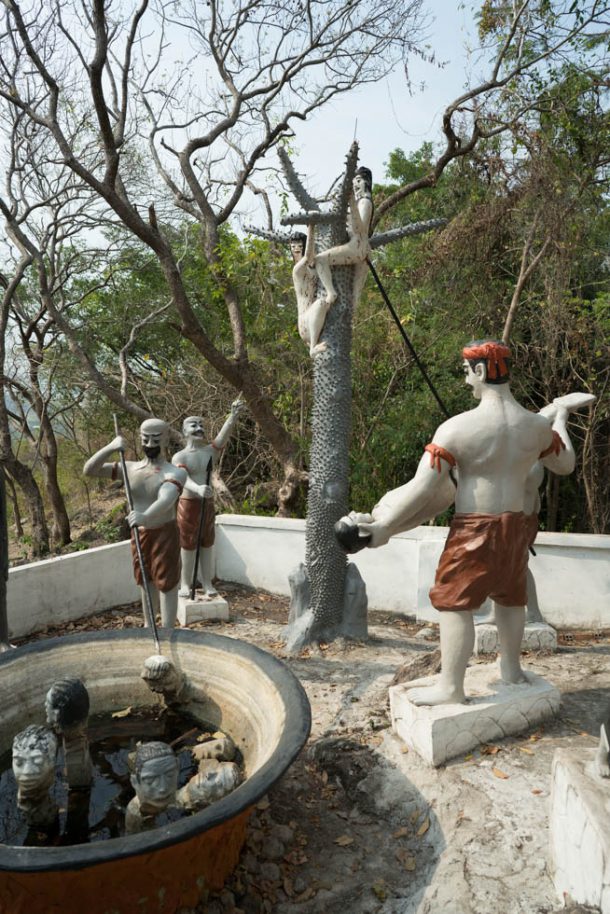
After a prisoner signed his/her confession, they got killed. For that, they were transported during the night out of the city, to a place now known as the Killing Fields.
Below are a few photos of what the Killing Fields look like now. The peace and serenity of the place stand in very strong contrast to the horrors that happened there about 40 years ago. Each visitor gets an audio guide, and everyone walks around the site in silence, listening to the audio guide, some people crying, others managing to hold their tears back.
You see the sites of mass graves, you get explanations of how the killing process was organized. You see a grave where hundreds of bodies without heads were found (most likely former Khmer Rouge soldiers who were suspected of having turned against the regime). You see the tree where babies and very young kids were killed: the Khmer Rouge soldiers grabbed them by their legs and hit their heads against the tree until they died. You see clothes of the victims. You see the weapons used for killing: axes, knives, bamboo sticks, machetes. (Never bullets, because bullets were expensive and guns made noise, so people were never shot.) You see a big pagoda built in memory of the victims, now containing hundreds of skulls and bones found there, categorized by sex, age, cause of death, and anything that could be inferred about the torture methods used on the victim.
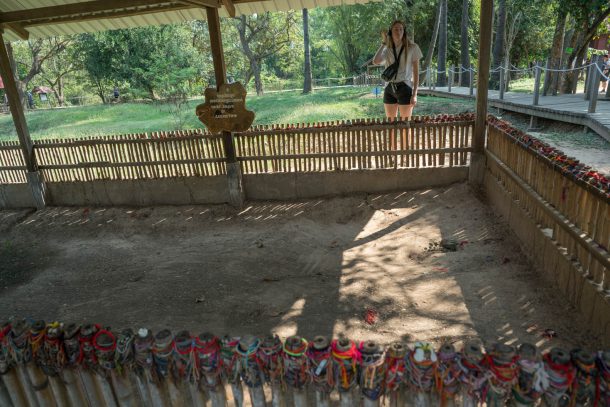
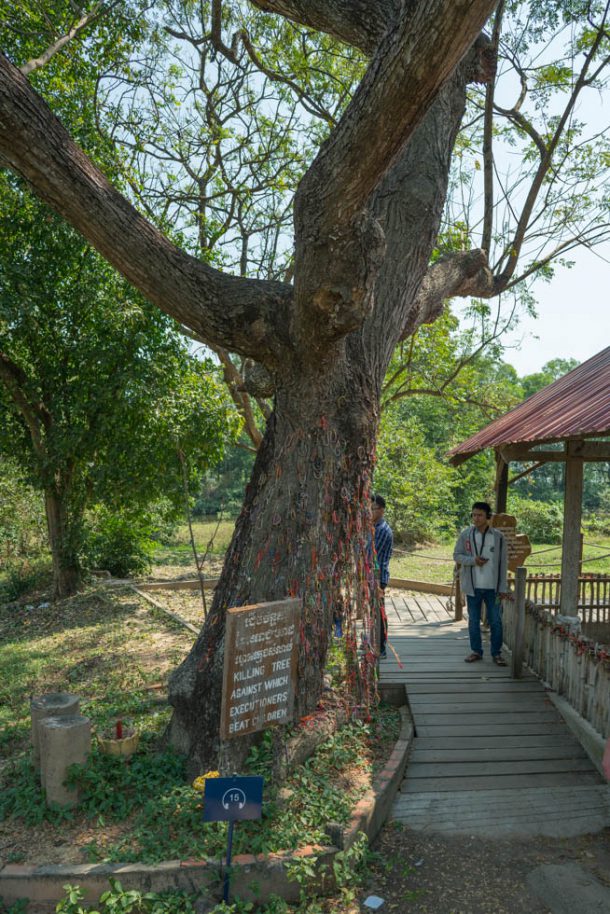
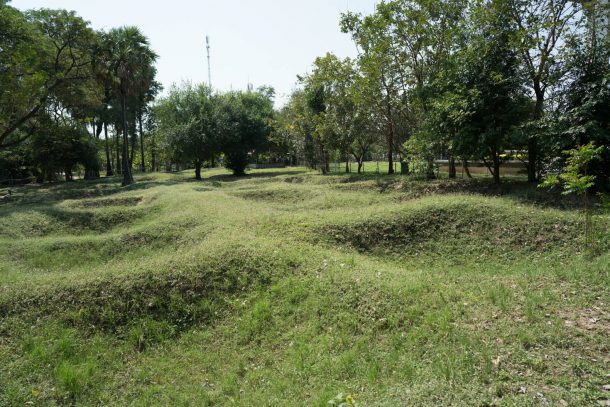
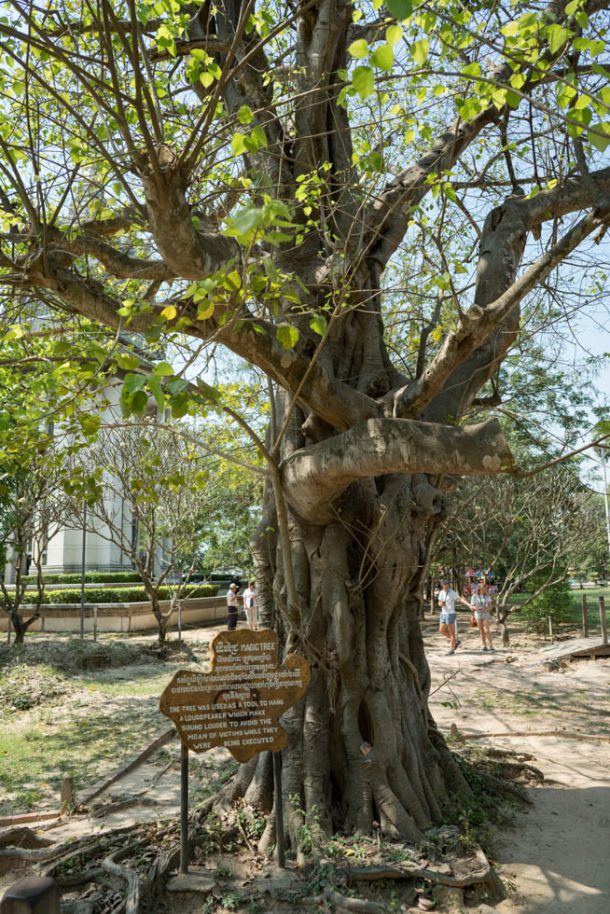
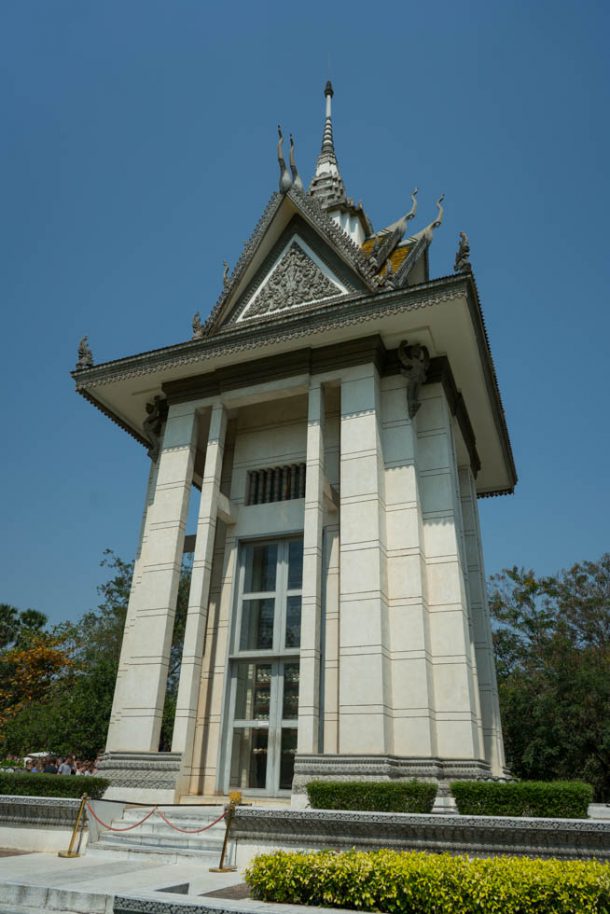
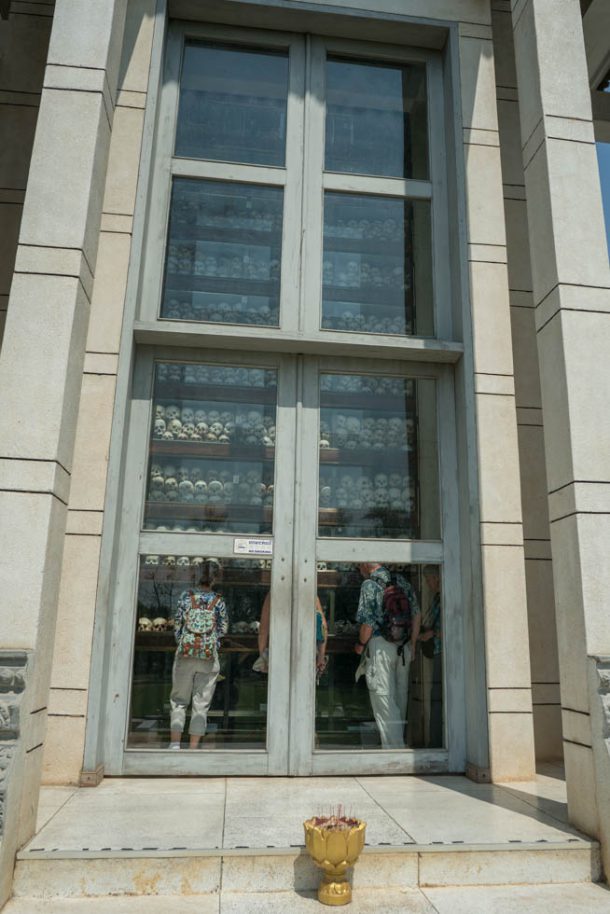
In January 1979, the Vietnamese army overthrew the Khmer Rouge. When they arrived at Tuol Sleng, they found some prisoners who had died from torture, but also 7 who were still alive.
Of the survivors of Tuol Sleng, 3 were there on the day we visited. They each had a translator and you could ask them questions. But I, for one, couldn’t think of anything to ask that didn’t sound stupid to me. What can you possibly ask someone who was held prisoner for years, was tortured almost daily, and lost his whole family in those days? Two of the survivors had written books about the experience and were selling them there.
The one good thing I can think about from the prison visit are the messages from visitors that you could see (and contribute to) in one of the last rooms. Hundreds of messages of “RIP” (rest in peace), “Nunca mas” (Spanish for “never again”), “Our eyes have been opened”, “I am heartbroken” and similar fill walls, pages in books and small dedication tags. Maybe there is some hope that the museum is fulfilling its purpose of telling the world about what happened and preventing something like that from happening again.
Visiting S21 and the Killing Fields rattled me for days. The experience is sadder and more shocking than you can imagine it before. Even if you are warned by others and you try to prepare yourself psychologically, it is still shocking and depressing. In both the prison and the Killing Fields, you’re walking exactly at the place where all the horrors actually happened. On the audio guides, you hear first-hand accounts from surviving victims and from former members of the Khmer Rouge. You learn about pain, loss and unimaginable suffering. In a very selfish, but I guess natural way, you thank god, or destiny, or whatever higher force you believe in, that this didn’t happen to you or to anyone you know. But you realize it happened to people exactly like you and everyone you love. And that it was completely senseless and could have been avoided. And you wonder what small role you could play in making sure it never happens again, to anyone, anywhere.
Leave a reply